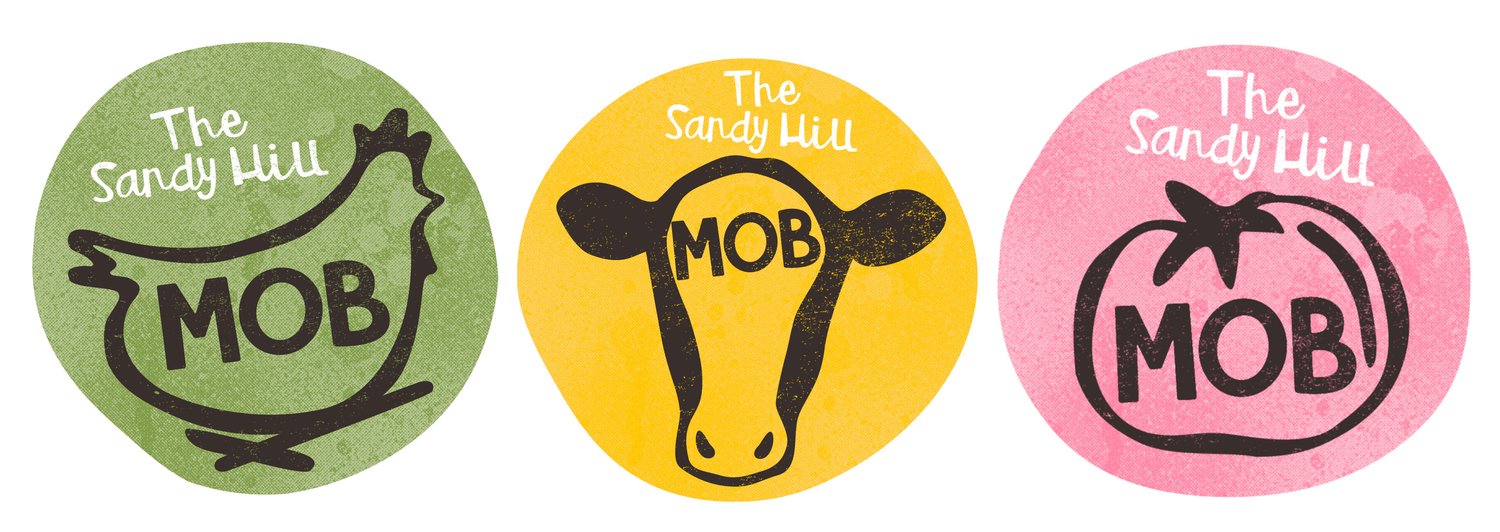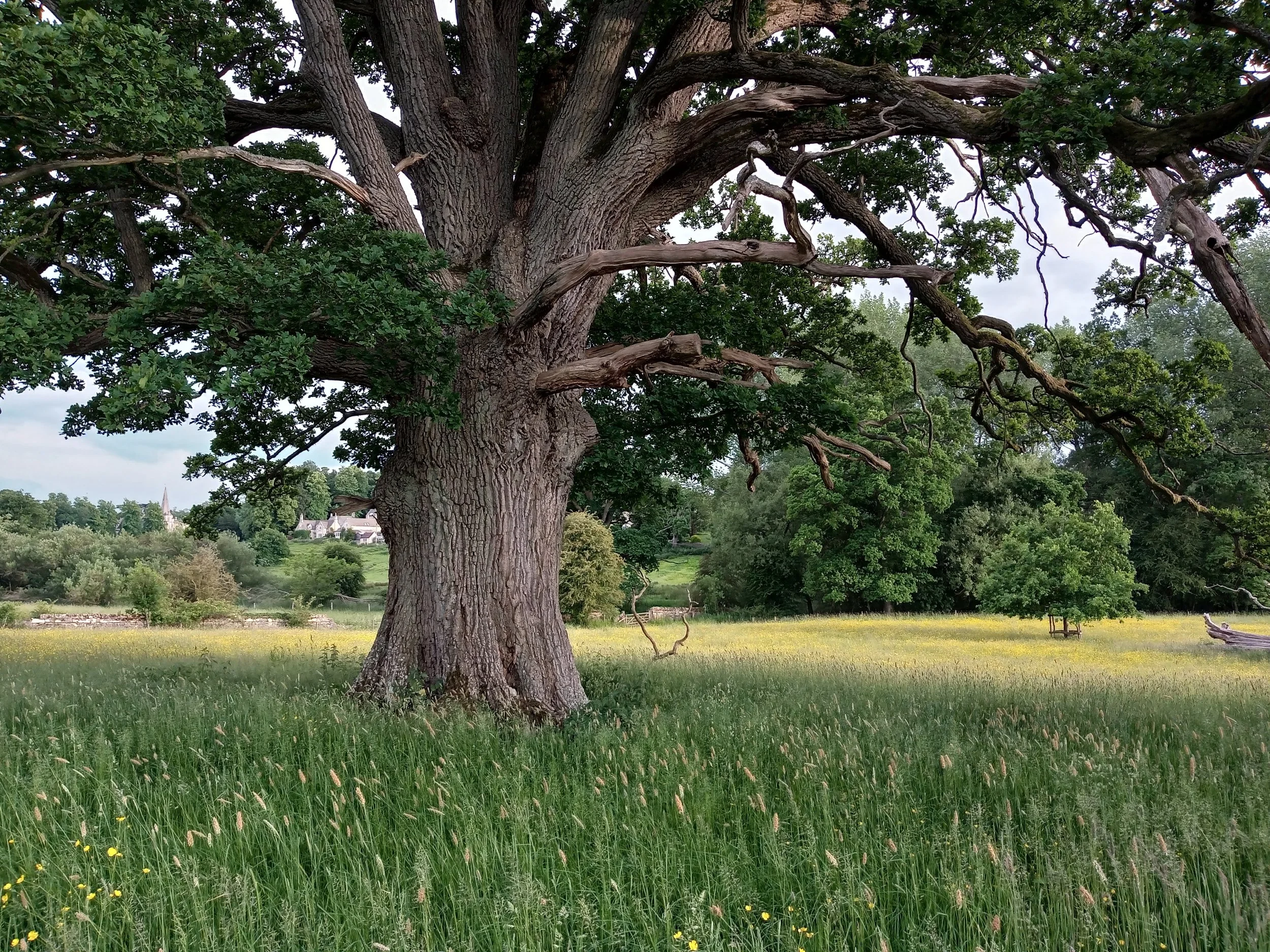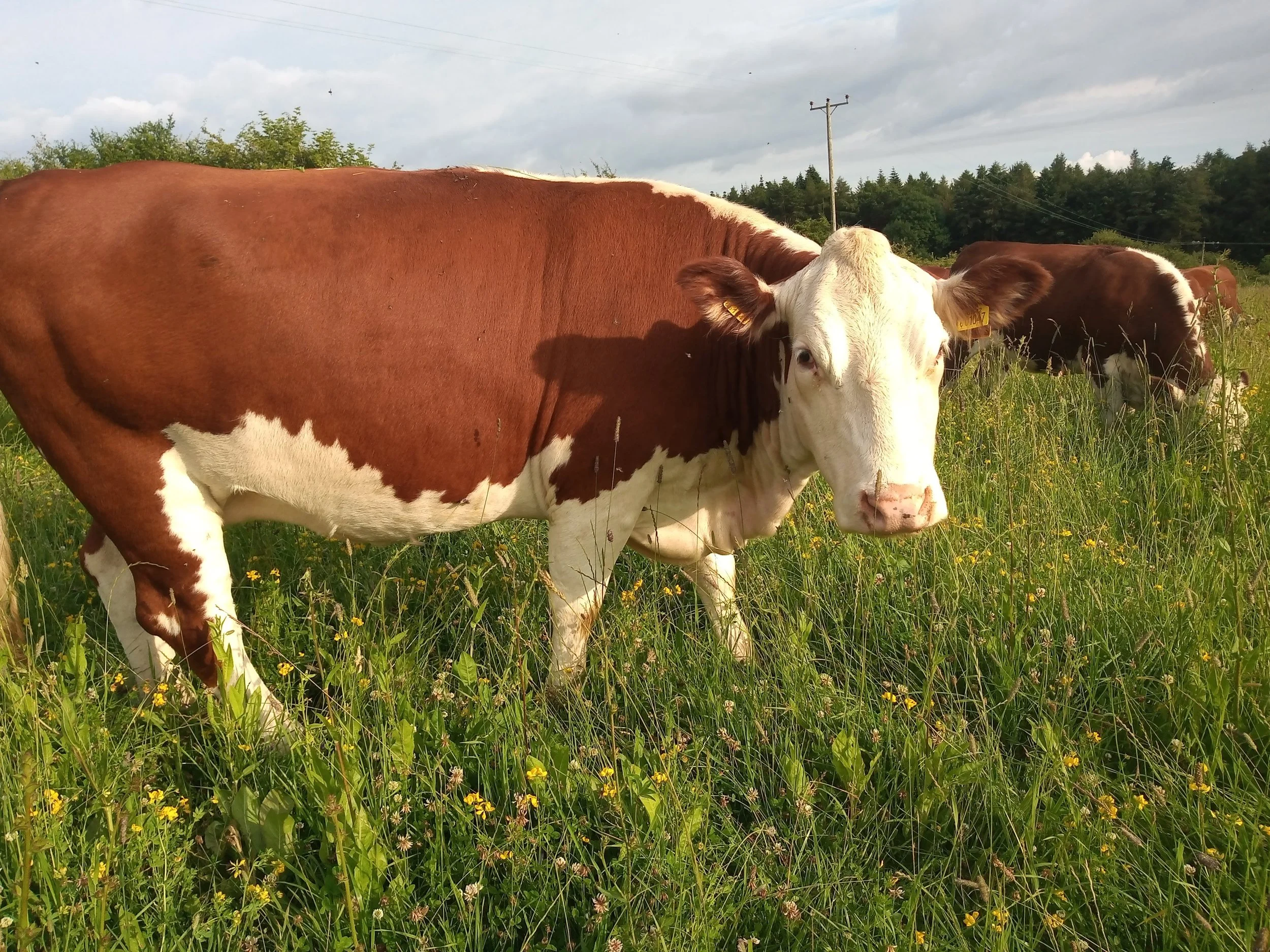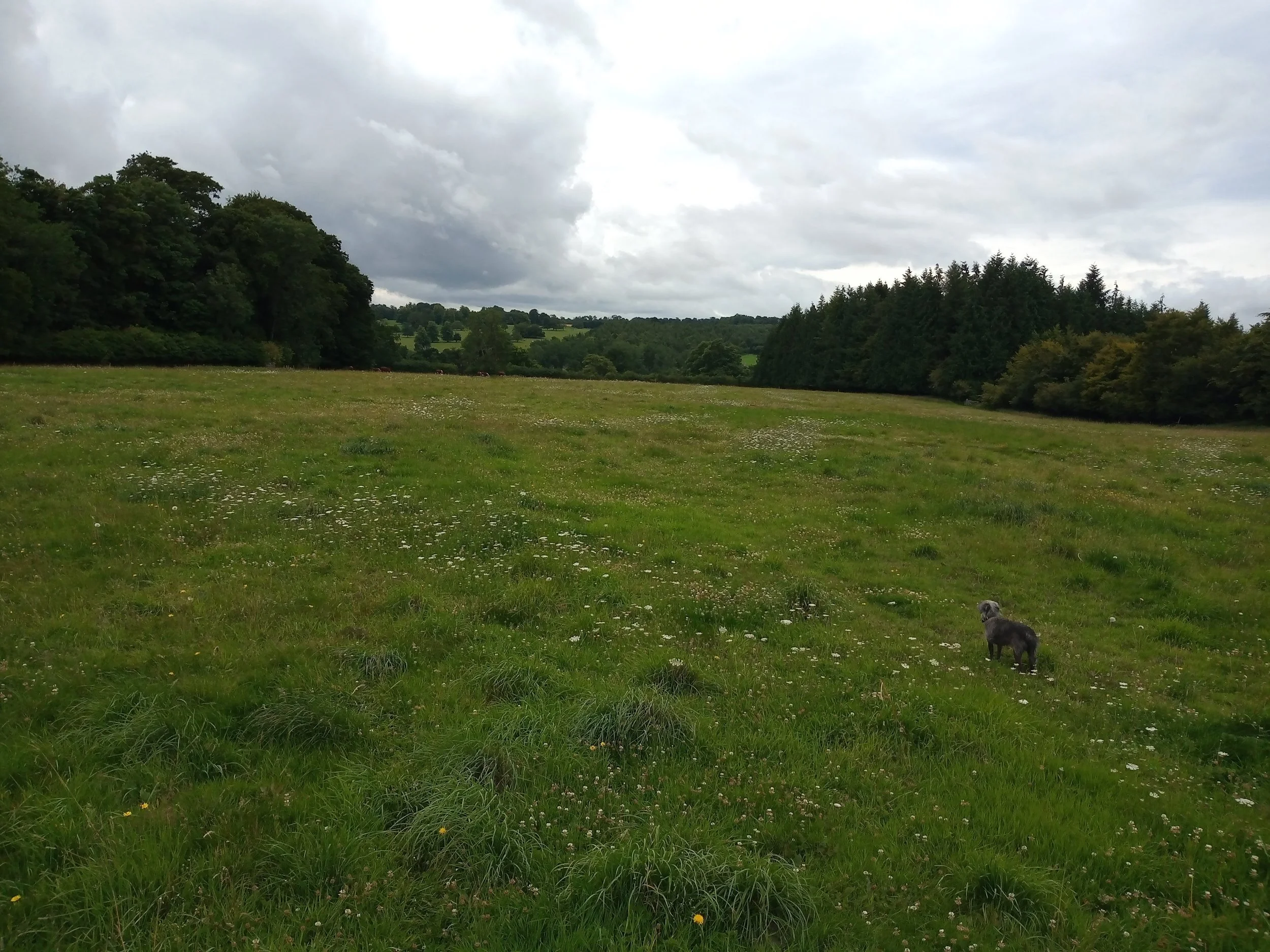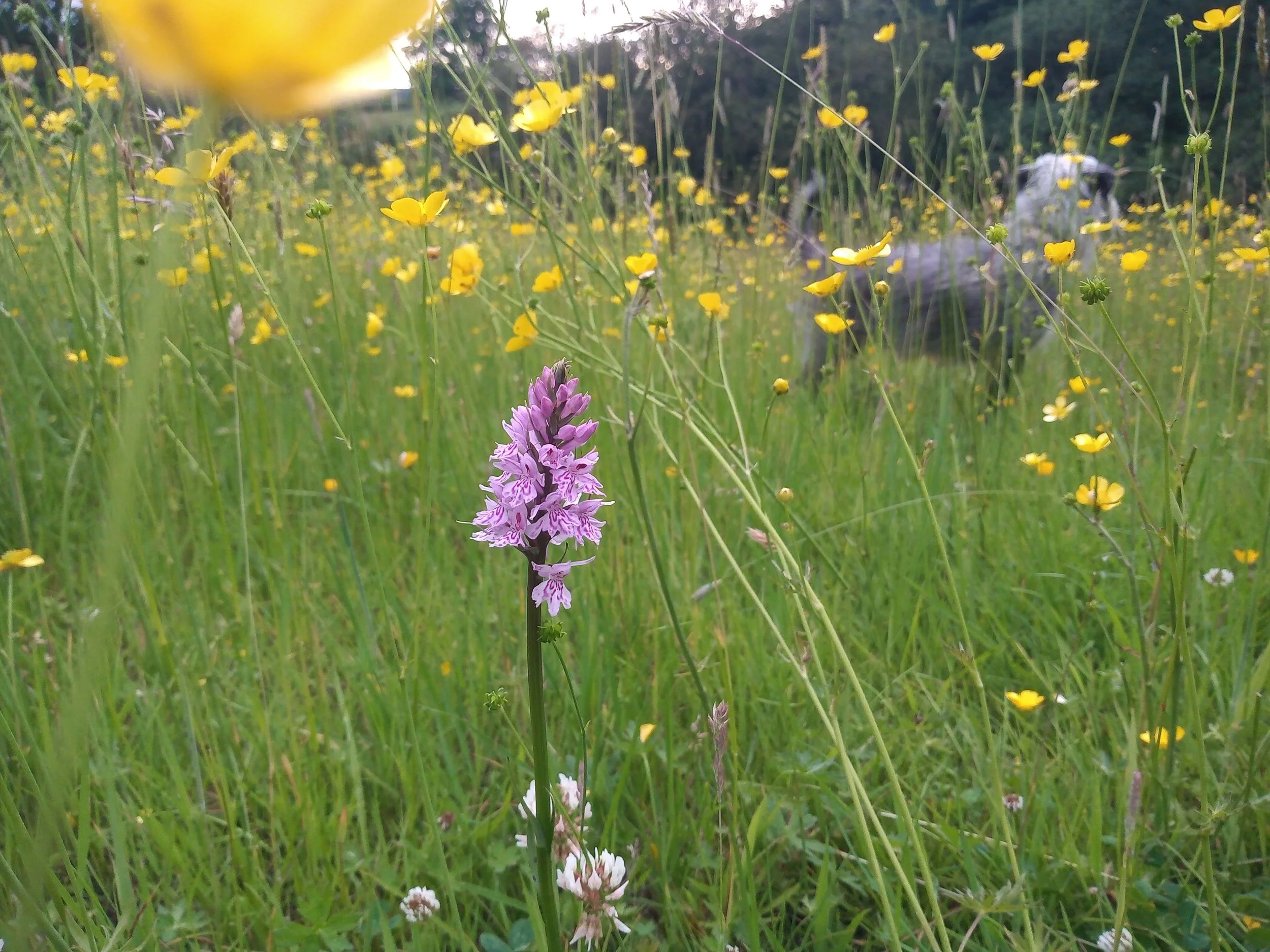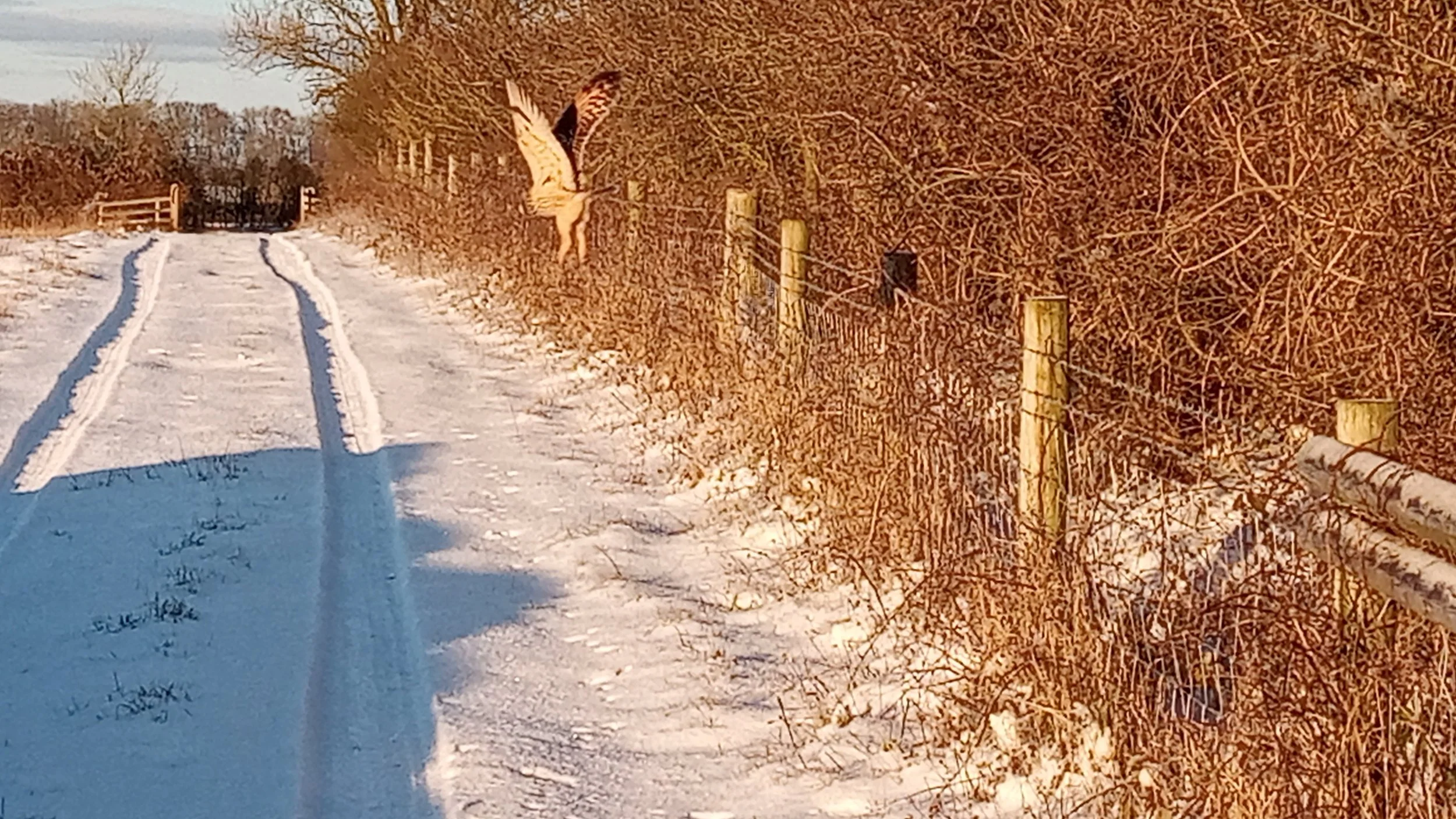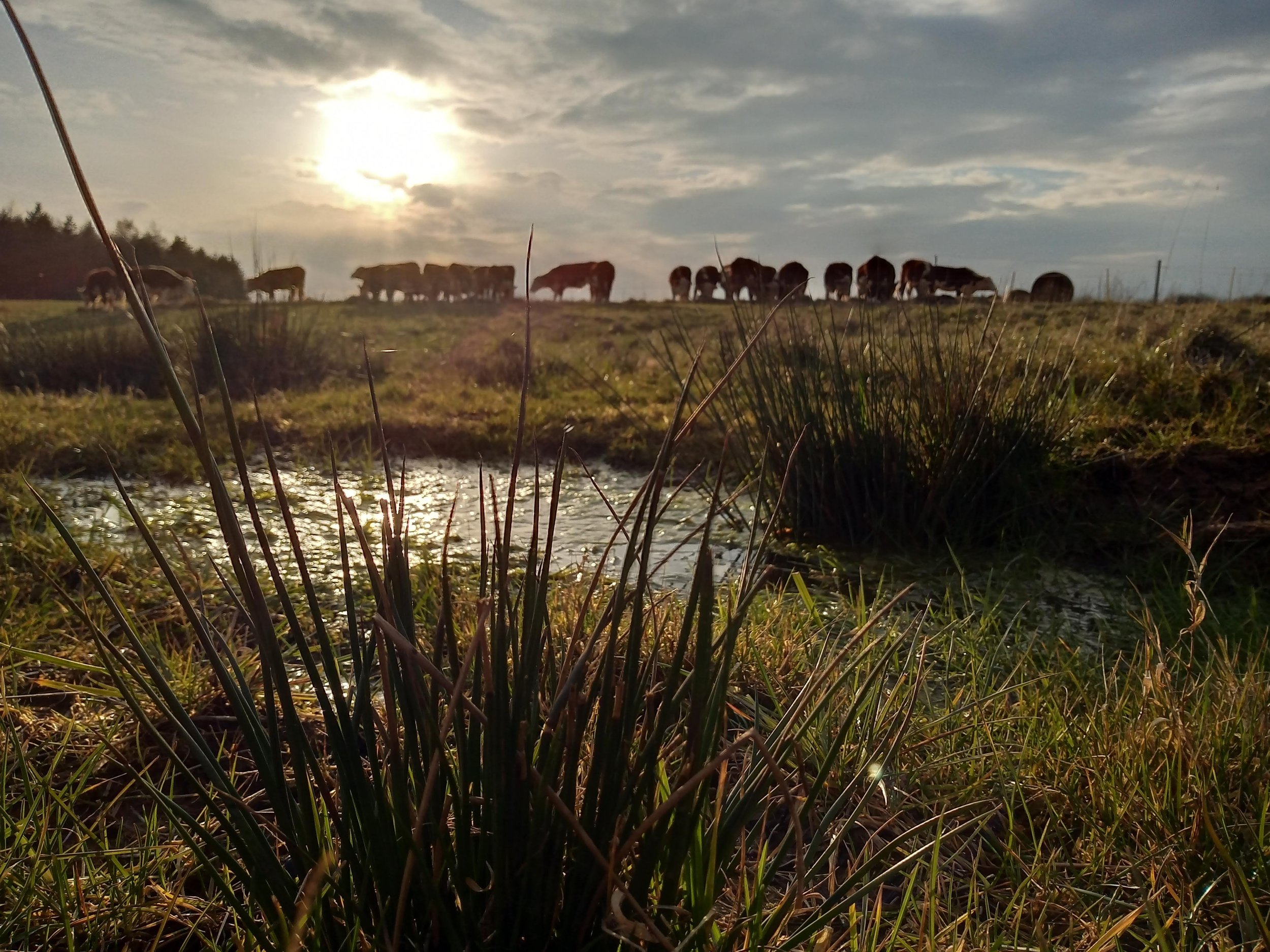Pasture For Life Biodiversity Case Study for Sandy Hill Farm Land November 2021
Laura and Matt Elliott, Sandy Hill Farm, Cotswolds
11 years ago Matt and I were cruising along in jobs we could have made careers out of and done the sensible thing – buy a house, get a mortgage, settle down in an ‘up and coming’ area of Bristol, not far from our allotment plot. But something tugged at us, we needed to try a few things out and the Universe obliged. One job ended, another allowed a career break and that security enticed us to take a year out in which we decided to try out Wwoofing around the UK and Ireland – mostly because we loved our allotment, watched a fair bit of River Cottage and quite fancied ourselves as successful smallholders.
I mention the Wwoofing because firstly it pushed us to consider an alternative way of living, but also during that year we stayed at a diverse range of farms, market gardens, smallholdings and conservation projects. We met a diverse community of individuals, experienced diverse cultures, were fed diverse meals and worked on a diverse range of farming enterprises, in diverse (UK) environments. I think the experience opened our eyes to the idea of abundance, of joining in with nature and that there is no ‘right’ way to do this.
Sandy Hill
[Photo 2]
Well, fast forward a little and we now find ourselves as new entrant farmers, 3 years into a tenancy on Sandy Hill Farm Land, a 110 acre farm on the National Trust’s Sherborne Park Estate in the Cotswolds. The land is gently sloping down to the Sherborne Brooke, is South facing and sits between 125 and 175 metres above sea level. We have a herd of Pedigree Hereford Cattle which are certified Pasture for Life and marketed under the label ‘The Sandy Hill Mob’ – we sell all our beef direct in boxes selling locally. We also work closely with a really inspiring organic pig farm, Eastleach Downs, who are radically changing their system which includes growing all of their own feed for the pigs and thus not relying on imports of soya. We sell their pork alongside our beef and we have also started a small flock of Shropshire sheep (Matt’s a Shropshire lad!) at the request of customers for lamb. Pretty much the whole farm is under Higher Level Stewardship options which includes floristically enhanced margins around all of our ex-arable herbal leys, limits cutting of our hedges which are spilling out and a feast for redwings and fieldfares come the winter.
Ex-arable
60 acres of the land is ex-arable. Prior to 2016 it had been let to a neighbouring tenant and managed as conventional arable land – certainly ploughed every year and most probably sprayed with pesticides/fungicides/fertiliser as required by the system or the crop that year. 5 years ago, the National Trust took the land back in-house and planted up these fields with a diverse Cotswolds Seeds herbal ley, including a multitude of grass species, sainfoin, chicory, salad burnet, clovers, vetches, plantain and more. This land is very sandy/Cotswold brash, i.e. It is very free draining. This is useful for outwintering our cattle but it also means that there is very little topsoil left after years of intensive arable use and can dry out quickly in the summer months. We are, however already seeing changes. We took the land on in 2018 and started mob grazing our Pasture for Life certified herd of pedigree Hereford cattle immediately. The last 2 years we have noticed a few Pyrammidal orchids coming up in the herbal leys which is very encouraging – not least because it means that the mycorrhizal fungi networks that orchid seeds depend on to germinate are returning.
Permanent Pasture
The remaining 50 acres of the farm is permanent pasture. Historically one field had horses kept on it and signs of compaction still show with a multitude of docks and thistles. The remaining fields had sheep set-stocked on the land – it was kept bowling green short and likely fertilised. There is a lack of diversity of flowering plants on the parkland fields, but plenty of buttercups and patches of creeping thistle! In contrast to the ex-arable fields, this half of the farm is heavy clay and we can’t graze the majority of it in the winter or when it is very wet. Acorn and Milking ground are historic parkland fields, (& ridge and furrow) and contain Oak trees thought to be 400+ years old plus a good number of fallen oaks, which are left in situ to provide plenty of habitat for dead-wood loving insects and beetles (and therefore their predators also). They also serve as excellent scratching posts for cattle!
Mob Grazing
We are mob grazing (moving towards holistically planned grazing as Laura completes the Holistic Management Course) our cattle and moving them around the farm using electric fencing. We keep the cattle as one group – all the cows and calves, yearlings, steers and heifers. It is not uncommon to see a cow with calves of different years all grazing together as a family unit. Our cattle are on daily moves in the growing season and we noticed the benefits of doing this almost immediately. Firstly they are only ever on one very small part of the farm at any one time which means the remaining land is resting, regrowing and setting seed. Because the cattle are ‘mobbed up’, the stock density increases, meaning greater trampling activity – some of the pasture is trampled into the soil which increases our soil organic matter and helps to feed all the microorganisms and life there. The cattle don’t have time to selectively graze out their favourite species, there is a much more even take of pasture which allows all species to thrive.
Bale Grazing
We outwinter our herd of cattle, they grow thick, fluffy winter coats and hold condition very well over the winter. We slow up the rotation during the winter – we allow them bigger paddocks and they might be in one paddock for 3-4 days. We then roll in round bales of hay to feed them. This we have found to be amazingly good for the soil – the extra trampling of any ‘wasted’ hay gets pushed into the soil, once again increasing soil organic matter. By keeping our cattle out we know we are supporting the dung beetle population, which struggle on those warmer winter days when they will emerge, often to find no pats because of our housed winter stock. We have bought in wildflower hay from neighbours and rolled this out in one field that previously hadn’t a lot of diversity. The next summer there were what looked like rolled out carpets of wildflowers including wild carrot, lady’s bedstraw, bird’s foot trefoil, self heal and knapweed – it was incredible to see the results of our actions so visibly!
This last summer the same field hosted 3 species of orchids that we have never spotted previously – bee, pyramidal and Southern Marsh. The satisfaction this gives us, to know that we are helping improve the biodiversity above and below ground is so motivating, especially on those tougher days (eg, rolling a bale into sleet on a harsh February day!).
We are fortunate to live in an area which is already rich in wildlife. Our farm is surrounded by a number of planted copses in amongst the fields which, whilst not part of the tenancy have an impact on the rest of the farm in terms of biodiversity, water flow and shelter. Snipe have taken up residence in one field that hosts a wet flush; there’s usually a kestrel to be seen hovering over the unkempt margins along with barn owls and last winter a wonderful sighting of a short-eared owl. A local birdwatcher confirmed that the flock of goldfinches dancing amongst the chicory seeds in winter numbered approximately 300. And it is difficult not to get excited seeing the local swallows swooping over the cattle on a summer’s evening helping to control the fly population.
The benefits to the farm of this increase in biodiversity are hard for us to quantify in facts. We have found that by focusing on our grazing, essentially trying to capture as much sunlight via photosynthesis as we can, everything else starts to fall into place. The soil is improving, our herbal leys are thickening up, we are noticing more diverse flowers and species appearing in the pastures, the insect life is increasing and therefore we are seeing more small mammals, foxes, badgers, fallow and roe deer, hares, birds, bats and even a common lizard! This greater abundance feels healthy and the cattle benefit directly from this. Farming with nature feels exciting. You feel a part of something bigger, and most of all humble that mother nature knows best – she always has lessons to teach.
Monitoring
Monitoring is something that we admittedly need to spend more time on. The National Trust carried out some baseline surveys before we took on the farm which we will look to repeat in the next few years and it will be interesting to see if our feeling for how the farm has changed is backed up in evidence. We will start carrying out our own ecological monitoring which we are just learning how to do from next year.
Finally…
As new entrant farmers, still finding our way and with plenty still to learn, we are finding it so encouraging to see the changes in biodiversity that have already come about in just 3 years. The real excitement comes in being in the early stages of a transformation of a previously intensely managed farm, where we can only imagine what further changes we might see in the next 3 years (and beyond).
